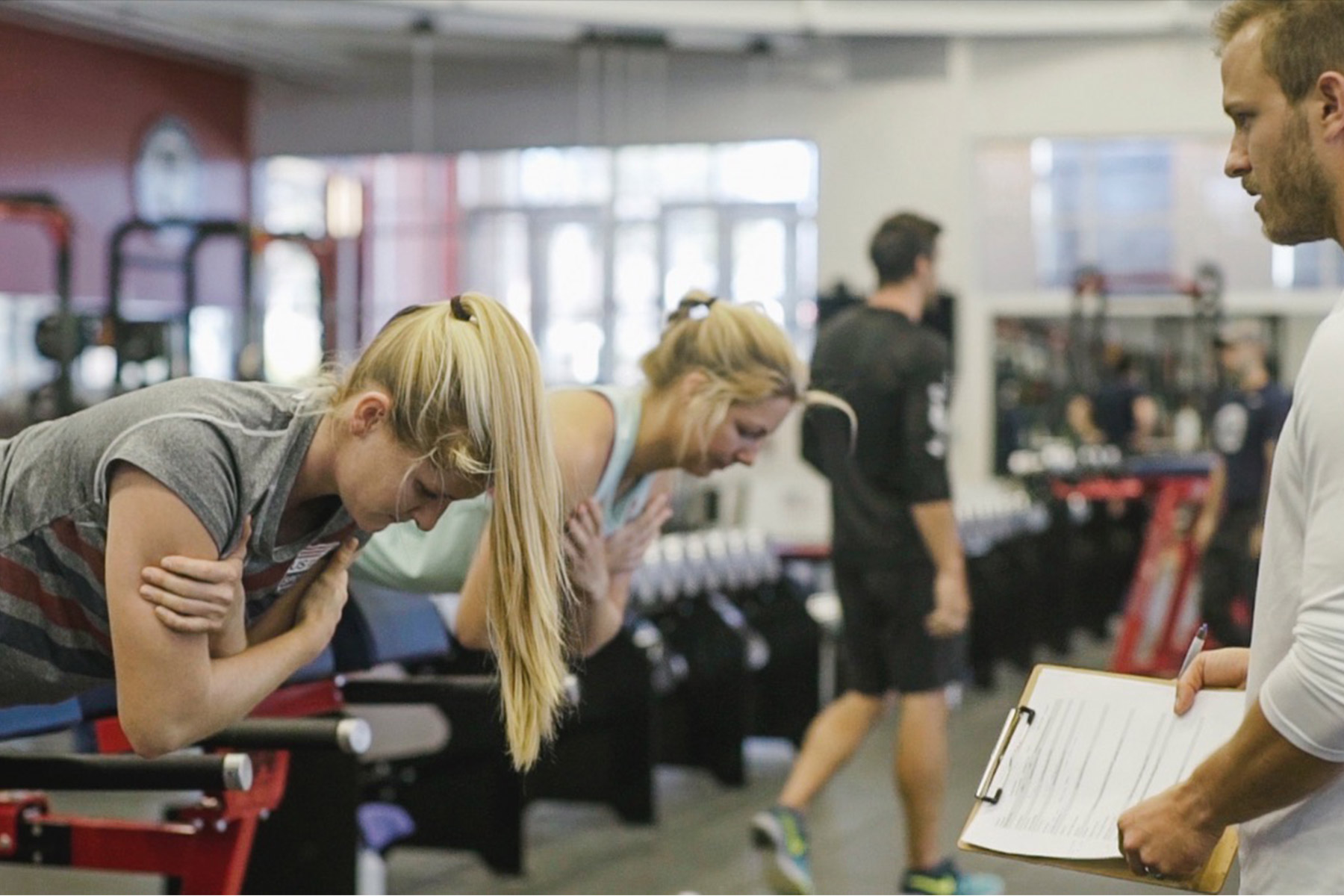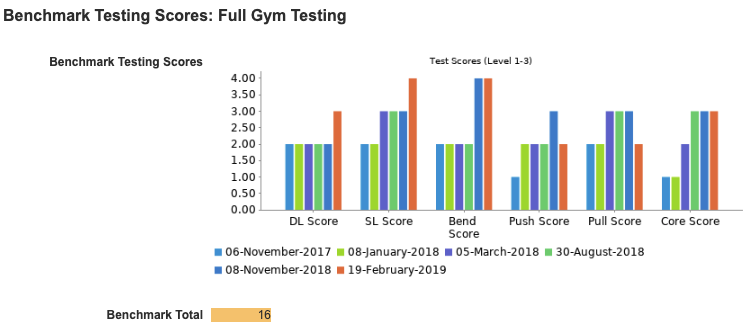
6 Reasons For A Fitness Test
Fitness Testing–those two words are justifiably accompanied by groans and anxiety. Often, testing is performed in a group setting escalating an athlete’s anxieties about performance and judgement. Fitness Testing is not easy. The test is designed to find the limit of what athletes are capable of performing. A comprehensive fitness test will evaluate an athlete’s ability in strength, flexibility, and cardiovascular metrics to understand the strengths and weaknesses of the athlete. Yes, like any test, the idea is to evaluate the athlete and compare him/her to a standard, which is based on the athlete’s age, gender, and sport. Where athletes and coaches have the wrong idea, is how the results of a fitness test should be interpreted. For most of us, we interpret the test results as showing our weaknesses, and, when compared to our peers, that makes us feel vulnerable and anxious.
Let me say that THIS IS THE WRONG WAY to interpret fitness results!! It takes many years to reach the physical criteria needed to perform optimally in sport and each athlete’s ability is the culmination of their physiological development and life experiences. Particularly for athletes under 20, there is so much variation between individuals because the onset of puberty is unique, that age alone may be the most inadequate standard to compare. In addition to physiological drives, an athlete’s experiences, like when the athlete begins and continues a strength and conditioning program, will impact fitness test results.
The Correct Fitness Testing Mentality: Am I better than I was yesterday? Focus on constant improvement and you will better enjoy the process and focus on what matters.
The best way to view Fitness Testing results is to embrace your personal improvements. Are you stronger than you were during your last testing period? Is your body becoming more efficient with movement and the usage of its energy systems? Are you achieving constant improvement in your training? Is your training effective? If the answer to these questions is, “yes” then you should feel satisfied with your efforts and test scores! Improvement alone should be the metric that satisfies the athlete and coach’s hard work.
With multiple fitness tests, one can ascertain the rate of progress in improvement to better understand the trajectory and timeline of the ultimate goal, which is the standard–based on the athlete’s age, gender, and sailing class. This knowledge gives athletes and coaches smart insight into the realistic expectations of an athlete over time and can provide better context for long term planning. In terms of SPT’s Olympic athletes, this knowledge can help plan when athletes should begin to travel to international events, how to spend money on resources, and how to prioritize training each year. Consistent physical testing saves SPT athletes hundreds to thousands of dollars each year in this way! There are many other reasons consistent physical testing can save you money.

(All of SPT's services provide Fitness Testing and tracking to ensure athletes are improving each quarter.)
The Right Reasons To Have a Fitness Test
- Health — I’m not talking about athletic performance, but overall health for living. Fitness testing can identify health issues as well as provide context on the overall health of an individual. There are standards for overall health and there are standards for athletes based on their sport. It’s important to understand and appreciate the difference. What athletes learn during their sport experience gives them the foundational knowledge and awareness to live healthier, more active lives in the future even after they are no longer participating in sport at a high level.
- Get A Baseline — This applies for both overall health and for athletic performance. With a baseline, athletes can better assess their training and make smarter decisions about how to progress or focus their training. As sailors, we compare our results each year to determine if we are improving. An error many athletes make is that they believe their performance is only tied to their sport-skill improvement. For example, a sailor that goes from 80th at last years Orange Bowl Regatta to 30th at this year’s Orange Bowl could claim success was based his/her ability to sail the boat better or because of his/her improved tactics. However, a slew of other factors like weight gain, body growth, increased strength, or improved cardiovascular gains, just to name a few, could also equally attribute to that athlete’s success. What many coaches, parents, and athletes often overlook in youth sports is the impact of physical and mental maturity on performance. Maturity is expressed by physiological and experiential drives: nature and nurture.
- Identify Signs Of Early Specialization — Sailing is a late specialization sport, which means athletes should not specialize to sail a boat until their late teens or early twenties. Those that specialize too early have a higher chance of injury. SPT’s Fitness Test is designed to identify signs of early specialization, which can be the difference between a healthy enjoyment of the sport or an early retirement!
- To Train Smarter — To tackle a goal, one must understand where they are now and where they need to go. Combine these starting and ending points with periodization planning, and you have the recipe for smarter, more efficient training. Tackling a goal with a smart, detailed plan helps the athlete understand progress towards the goal and gives the athletes confidence in the priorities to stay on track.
- Monitor Progress — How else can you evaluate all the sweat and soreness from your last training phase without consistent Fitness Testing? Remember, the goal is to be better than YOU were yesterday. Understanding the trends in your quarterly fitness testing can validate your efforts and reinforce all those sweat hours!
- Identify Strengths And Weaknesses — The goal is to be an athlete first and then choose your class or sport. Sailing is a late development sport, which means that athletes should not be boxed into a class or facet of sailing. The goal of every sailor is to focus on athletic development and, when the time comes, choose the class that allows them to best express their strengths! Sport skill accounts for a small percentage of the factors that contribute to performance. Coaches, parents, and sailors need to recognize the many other factors like physical and nutritional literacy that will equally contribute to success on the water!



